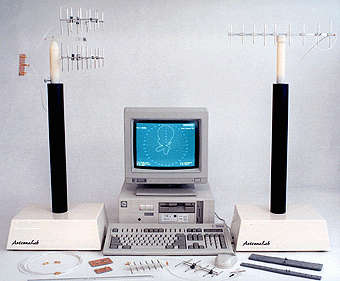A unique antenna modelling system designed to be used to teach and demonstrate common antenna configurations, and as a design tool in the research and development of antennas. The antenna system being investigated is mounted on a small platform on the top of the tower. The other contains a receiver controlled by a frequency synthesiser which produces an output proportional to the received signal intensity. The towers are linked by a five metre multiway cable carrying both power and data. The transmitter tower is linked to a microcomputer by a similar cable. A selection of components is supplied with the system to enable most common types of antenna to be constructed: monopole, dipole, yagi, log periodic, stacked and bayed yagis, horn etc.
Measurements are controlled, and results plotted by the computer software which provides high quality graphic displays. | |||||

